
From Tides of Flame #1-7
The George Jackson Brigade (GJB) was an urban guerrilla group that operated in Seattle from 1975 to 1978. The group was named after George Jackson, an imprisoned Black Panther who had been killed at San Quentin Prison, California, in 1971. The Brigade was composed of unemployed ex-convicts, ex-students, and working class communists and anarchists. Over half of the members were women and half of the women in the group were lesbians. The group had no leader and all decisions were made together.
The group’s first actions in the spring 1975 centered around a labor struggle in Seattle. A local contractor had refused to hire black people, triggering a popular campaign against the contractor. There were many pickets and blockades of the contractor’s work-sites during which many people were arrested.
The media also extensively covered this popular struggle.
Finding it opportune to intervene in the struggle, the Brigade placed a bomb at the contractor’s headquarters in the middle of the night, harming no one while completely destroying the building. They also circulated a leaflet in the crowds of demonstrators that criticized the struggle for making it center around race rather than general unemployment. Later, the Brigade sabotaged construction equipment, burned a truck, and damaged a CAT that belonged to the same racist contractor. Due to the bombing, the contractor refused to testify against the protestors who had been arrested during the pickets. The Brigade did not claim these actions, not wanting to detract from the struggle or have their actions be labeled terrorism.
In June, Brigade members bombed the Department of Corrections building in Olympia, expressing their solidarity with all of the prisoners in Walla Walla State Prison. This was the first time that the Brigade claimed an action by issuing a communique to the media and the public. In August, they then bombed the FBI office in Tacoma and the Bureau of Indian Affairs (BIA) in Everett on the same day. This was done in retaliation for the suppression of the American Indian Movement by the FBI and BIA. These bombings went unclaimed.
By the end of the summer, after three successful actions, Brigade members were joyous and hopeful. All of their actions had been carefully planned and executed, harming no one and resonating with the public. With the Brigade, Seattle had joined the armed international struggle against capitalism. It seemed as if the summer of 1975 was to mark the beginning of a new offensive.
But life is chaotic, filled with traps, and always eager to test the bold. One evening in September, a young man not affiliated with the Brigade attempted to arm a bomb at the Capitol Hill Safeway. At the time, Safeway was far more corrupt and exploitative of immigrant farm workers than it is today and had become a target for protests, pickets, and arson across the US. That night, the young man blew himself up while arming the bomb. Hearing the news of his death, the Brigade immediately planned their revenge. Unlike their previous actions, their plans were rushed. A timed bomb was placed in a bag of dog food at the Capitol Hill Safeway, and members quickly telephoned in to the police and told them to evacuate the store. Hoping to make the GJB out to be monsters, the police did not call Safeway and have them evacuate the store. The bomb went off, causing minor injuries to several customers.
This disaster plagued the hearts of the Brigade members. The rest of the fall and winter of 1975 was spent locked in self-criticism. What was meant to reflect the general distrust and anger felt by the neighborhood towards the Safeway had instead harmed poor people from the same neighborhood. Their hasty planning was one factor that caused these injuries. It would not be until New Year’s Day of 1976 that the Brigade would act again.
In attempting the practice self-criticism with their actions, they bombed the Safeway regional headquarters in Bellevue, harming no one. On the same night, the Brigade bombed a City Light substation that supplied power to the wealthy Laurelhurst neighborhood, completely destroying it. At the time, City Light workers were on strike against the company, and they staged a picket around the ruins, fighting off the scab workers who City Light had paid to repair it. After the failure of the Capitol Hill bombing, the Brigade found its actions supported and appreciated by working class people. The group had struck two exploiters in one night and the reasons why could not be any clearer.
Unfortunately, one of the Brigade members was to be murdered by the police three weeks later during a bank robbery in Tukwila. Two others members of the group were captured during the robbery, while the rest of the Brigade had to shoot their way out of the ambush. In March, while one of the prisoners was being taken to a doctor’s appointment, the group attacked his police guards and freed him. In the process, a guard was shot and wounded. After the prisoner liberation, the group retreated into rural Oregon to regroup after their defeat. It would not be until 1977 that the group would rise again. But that is a different story.
Some of you may know this history. If you don’t, next time that you spend too much money for shitty food at a Seattle Safeway or pay your bill to City Light, remember that it was not so long ago that people like yourselves decided to begin destroying the institutions and companies that degraded and sold away their lives.
-------------------------------------------------------------
On March 10, 1976, members of the George Jackson Brigade liberated their comrade John Sherman from police custody. Sherman had been arrested along with Ed Mead during a bank robbery in Tukwila several weeks earlier. The police had attacked the Brigade as they left the bank, shooting John Sherman in the jaw and ultimately killing Bruce Siedel. As the police put their captured comrades in the police cars, the Brigade continued to fire on the police until finally making their escape.
The Brigade had nearly made off with 43,000 dollars, money that was desperately needed in order to continue to operate clandestinely. At that time, bank robberies were a common method used by guerrilla groups internationally to fund their activities.
John Sherman was being taken from the King County Jail to Harbourview Medical Center for a doctors appointment when he was liberated by the Brigade. During the liberation, the Brigade shot the cop guarding Sherman and escaped. To claim this action, the Brigade mailed a bullet from the same gun used at the bank robbery to the Seattle Post-Intelligencer on International Women’s Day. They also sent the wiring from John Sherman’s wounded mouth to a local radio station. After this, the Brigade disappeared into rural Oregon, taking time to heal, mourn, and critically analyze their actions.
The Brigade had just lost two of its members. Ed Mead was in Walla Walla State Prison and Bruce Siedel was dead. Both of these men had been lovers of other Brigade members and had lived intensely and intimately with them for months. The wound that was in all of their hearts was deep as they settled into a slow, banal existence in the towns of rural Oregon. Many people in these towns helped them, some knowingly, others unknowingly. Liberating their friend had drained all of their meager resources and the Brigade was forced to learn a new level of self-reliance.
While they were in hiding, a Grand Jury was convened and many leftists and militants in Seattle were called in to testify about what they knew of the George Jackson Brigade. While still in hiding, the group mailed a handwriting sample to the media in order to clear the name of a woman whom the authorities said had signed one of the Brigades communiques. Some leftists cooperated with the Grand Jury, others refused and were jailed, and the entire Seattle left was put under intense repression for months.
In the midst of the repression, the FBI framed and imprisoned an anti-prison activist by paying a junky to say that the activist had participated in Brigade action. The FBI later gave the junky a new identity. During this time period, Ed Mead was sentenced to multiple life sentences for his involvement with the Brigade. Despite the repression, the Grand Jury was eventually defeated, having come up with nothing and being legally required to dissolve.
Knowing that they had to continue taking action, Brigade members began to assemble tools and equipment. Soon they launched a new robbery campaign to raise funds for their next offensive. After coming up with 25,000 dollars, while also using false checks to purchase food and other necessities, the group left rural Oregon and returned to the Seattle area. Once there, they settled into a clandestine routine and began to plan for their next attack against the global capitalist system.
On May 12, 1977, the Brigade placed two bombs in two Ranier National Bank branches in Bellevue. This action was done to support the prison strike that had recently taken place inside Walla Walla State Prison.
The strike had arisen in response to the lengthy sentences in isolation holes and the psychiatric behavior modification programs that were in practice at the prison. At the time, it was the longest prison strike in Washington State.
When the strike had ended, there had been assurances from the Department of Corrections that the barbaric practices at the prison would stop. Over time, many people saw that the assurances had been empty, with very little changing in the prison. The Brigade bombed the Bellevue bank branches because of the bank’s financial ties to the Seattle Times newspaper. The paper had been printing articles that condemned and demonized the prisoner strike.
This is how the second offensive of the George Jackson Brigade
began in the summer of 1977. With the memories of their fallen and captured comrades still in their hearts, the group pressed on in their efforts. What happened next is a story to be told at another time.
-------------------------------------------------------------
After their bombing of two Ranier National Bank branches, the next action of the Brigade was to acquire more money. Obviously, living a clandestine life did not permit them to earn money slowly, and large sums were necessary to rent houses, build bombs, drive cars, and buy food. On May 21st, 1977, the Brigade robbed the Newport Hills state liquor store near Bellevue. During the robbery, the Brigade was forced to take the manager’s wallet because it was in the same bag as the 1,300 dollars they had stolen. The next day, the Brigade mailed the wallet back to the manager with all of her personal money (about 45 dollars) still inside.
On June 20th, 1977, the brigade robbed a Ranier National Bank near Bellevue, continuing in their pattern of stealing from where the richest people lived. They fled the bank with 4,200 dollars. In a communique issued after the robbery, the Brigade took credit for their actions and reminded the reader that Ranier National Bank was specifically targeted because of its financial ties to the Seattle Times. The paper had been printing misinformation about the prison struggle taking place at the Walla Walla State Penitentiary, the place where Brigade member Ed Mead was locked up. In the same communique, the Brigade told the reader that all of the money would be used to carry out further actions. True to their statement, the Brigade acted in less than two weeks.
Unfortunately, chaos got the best of the Brigade during the action. On July 3rd, the night before the nationalist orgy of Independence Day, the Brigade drove down to Olympia where they placed a triple pipe bomb near an electrical transformer adjacent to the Capitol Building. They called in a warning, instructing the authorities to clear the area in half an hour. When half an hour passed and there had been no explosion, the police searched for the bomb, found it, and eventually diffused it. In a communique explaining the intention of the planned attack, the Brigade said their bombing attempt had been for the prisoners in Walla Walla who were still being thrown into long periods of isolation. By August of that summer, the warden had been replaced and the prisoners taken out of solitary confinement.
Fall was approaching when Rita Brown, dressed as a man, walked into an Old National Bank, handed the teller a note indicating she had a gun, and walked out with 1,100 dollars. Eleven days later, on September 19th, again dressed in drag, she handed a note to a teller at a People’s National Bank on 76th Avenue. The note read simply: THIS IS A HOLD UP. I HAVE A GUN. THE GEORGE JACKSON BRIGADE. She walked out of the bank with 8,200 dollars, more money than the Brigade had ever stolen. With nearly 10,000 dollars, the Brigade planned its next campaign.
Machinists from various auto workers unions were on strike and picketing car dealerships. Brigade members joined the picket lines, had conversations, and decided that the rank and file unionists wouldn’t disapprove of an attack on the dealerships. Their first bomb didn’t go off, but on October 12th, they successfully detonated a bomb at the S.L. Savidge car dealership. The Brigade made sure to clearly state in a communique that they were in no way connected with the unions and were acting independently. Three days later, the group bombed two vehicles at a Dodge dealership. Three days after this, over 80 cars at a Ford Dealership had their tires slashed by anonymous individuals, causing over 5,000 dollars in damages. The Brigade was not responsible for this last action, so it is clear that the Brigade was correct in assuming that rank and file unionists supported clandestine sabotage.
Meanwhile, in Germany, another urban guerrilla group called the Red Army Faction (RAF) caused an international scandal. In April of 1977, three members of the RAF were found guilty of murder and imprisoned. That September, elements of the RAF kidnapped Hanns Martin Schleyer, the president of the Employers’ Association of the Federal Republic. Schleyer had been a member of the Nazi Party and the SS during the second world war. As a respected businessman in post-war West Germany, Schleyer represented the hypocrisy, blindness, and unbroken fascism of German democracy. The RAF stated that they would not release Schleyer unless their comrades were freed from prison.
The German government did not respond to these demands, and so on October 16th, a commando of Palestinian comrades hijacked a Lufthansa plane, saying they would only release their hostages in exchange for the RAF prisoners. The plane eventually landed in Somalia to refuel where it was raided by German special forces. Three of the hijackers were killed and all of the hostages were freed. The next morning, the RAF prisoners their cells. The authorities claimed that they had killed themselves, but it was commonly understood that the prisoners had been executed. Seeking revenge, the RAF drove Hanns Martin Schleyer into the woods, shot him in the head, and told the media where they could find the dead Nazi.
To express their international solidarity with the RAF, the Brigade bombed a Phil Smart Mercedes Benz dealership in Bellevue on November 1st. The dealership was chosen because Schleyer was formerly president of Daimler Benz, the manufacturer of Mercedes Benz cars. Two days after this action, the Brigade released its 40 page political statement, The Power Of The People Is The Force Of Life, a text that details all of their exploits in their own words. Inspired by the actions of the RAF, the Brigade’s next plan was to kidnap the director of the Department of Social and Health Services, the person who oversaw all Washington prisons. Their plans were underway when the unthinkable happened. Rita Brown was captured, the group fled Seattle, and fear began to dominate the group’s minds. We will conclude the story of the George Jackson Brigade in a following issue.
---------------------------------------------------------------
Those who truly rebel, who fight with all their hearts, always risk the most. They risk their lives, their loves, their liberty. And so it was that the small group of rebels were reduced down to three.
Janine Bertram, John Sherman, and Therese Coupez listened to a police scanner as the authorities captured their comrade Rita Brown on November 4th, 1977. They immediately fled their safe house in North Seattle and found their way to a new house on a hill overlooking Tacoma. In a communique issued after their comrade’s capture, the Brigade wrote, “We learn a thousand times more from defeat than we do from a victory. This is true, but only to the extent that we make it true in our practice. And we will make it true because we love you, and we love freedom, and because we are part of the masses of people and a handful of sleazy capitalists and their lackeys are not a match for us. So take care of yourself and hold on. Victory is certain.”
Rita’s lover, Janine, was devastated by the capture. In their new safe house, Janine wrote to her lost love in her diary. John and Therese, a straight couple, offered her little emotional support. “When I say I want you, I’m told I’m sniveling. Fuck, don’t need that support,” she wrote. The group tried to keep itself disciplined but instead began to devour itself. After a bank robbery, John mysteriously lost a large sum of their stolen funds. “Wonder which of them it is that disposed of $150.” John had a gambling problem and constantly lied about what he did with the group’s money.
After their robbery, the group did little but read, go to the movies, and abuse drugs to mask the pain of their loss. “It is hard to keep a clear view of the necessity of this work when I am completely isolated. Snivel...not a friend in the world,” Janine wrote. Eventually the money dried up, some of it spent on rent and food, some of it squandered on gambling and drugs. The group decided to rob another bank on December 8th, 1977. “Am scared shitless. I don’t think I’ll lose my shit,” Janine wrote before the robbery. Luckily, the group was able to get away with $3,966 from a Tacoma bank. A few days later, some trusted comrades came from Seattle with gifts, comfort, and encouragement from the above-ground movement.
John continued to gamble money, coming back to the safehouse one night missing $800 dollars. Janine and Therese confronted him, but Janine was passive and could only listen as Therese and John yelled at each other. When Janine began to express criticism of John to Therese, she angrily defended her male lover. This only increased Janine’s isolation, but luckily a group of women from Seattle came to visit her. “Many women are sending you white light,” she wrote in her diary to Rita. Indeed, the women’s community in Seattle was supporting Rita. In addition to this, the visiting women helped Janine attempt to learn meditation techniques that would allow her to contact Rita psychically. In her diary, Janine described her psychic connections growing more powerful.
On December 23rd, the group planted a bomb at a Puget Sound Power & Light substation in Tukwila. They called in a warning and twenty minutes later the bomb exploded, harming no one. In their communique, the group said the action was intended to “protest the criminal and inhuman conditions at the King County Jail.” Their captured comrade Mark Cook had been kept in isolation at the County Jail for twenty one months and the communique encouraged everyone to do what they could to end this type of treatment.
The next day, a woman called KOMO TV and told the operator that a bomb would go off at a truck company in fifteen minutes. The bomb exploded, destroying one car. In a communique issued after the bombing, the Brigade said the action was in solidarity with auto workers who were still on strike. The local machinists’ union representative disowned the attacks, but the Brigade maintained its faith in the rank and file workers.
John continued to waste away money and the two women forbid him from going out. He didn’t listen to them, and Janine began to dream of her and Rita beating the crap out of him. With her group falling apart, Janine began to doubt the armed struggle, herself, and her dreams. After a random bank robber began shooting at police during a botched escape, was shot in leg, and yet continued to fire until he was captured, Janine wrote “that takes courage or insanity.” On January 10th, the Brigade robbed another bank, making off with $2,518.
On January 11th, Rita Brown pleaded guilty to her charges. This made Janine sad and confused. “It’s good you said yer glad you did it, but people associate guilty with wrong.” The group continued to disintegrate, unable even to play a board game without fighting. On January 20th a group of above-ground comrades visited and brought Rita’s full statement to the court. It refreshed and rejuvinated Janine to see that her lover was still defiant and strong.
One month later, Rita Brown was sentenced to twenty five years.
After robbing a bank in University Place for $1,899, the Brigade received a communique from a group called the “Coven.” This was an above-ground group and in their text they applauded some actions of the Brigade and criticized others. They encouraged more
dialogue between the underground and the above-ground, citing a lack of it in the group’s actions. Both aspects of the struggle were necessary, but there needed to be more communication. The Brigade did not answer this communique immediately, but eventually invited some comrades to the house to begin to formulate a new strategy. Soon after this, the group was destroyed. Surrounded in their car, parked next to a burger joint, the three were captured by the FBI just as they were to rob a bank on March 21st, 1978. The group was only as strong as much as its members loved and trusted each other. Love broke comrades out of jail and propelled the group down the freeway after a bank robbery. Trust kept the group happy, motivated, and courageous.
As soon as the group began to turn on itself, its days were numbered. Whoever you are, remember to never take your friends for granted because they are all you have. This culture teaches us that all is dispensable, that friends are commodities, and that trust is never worth it. Let us all find our true friends and remember the words of Bruce Lee:
LOVE IS
FRIENDSHIP
SET ON FIRE.
http://tidesofflame.wordpress.com/


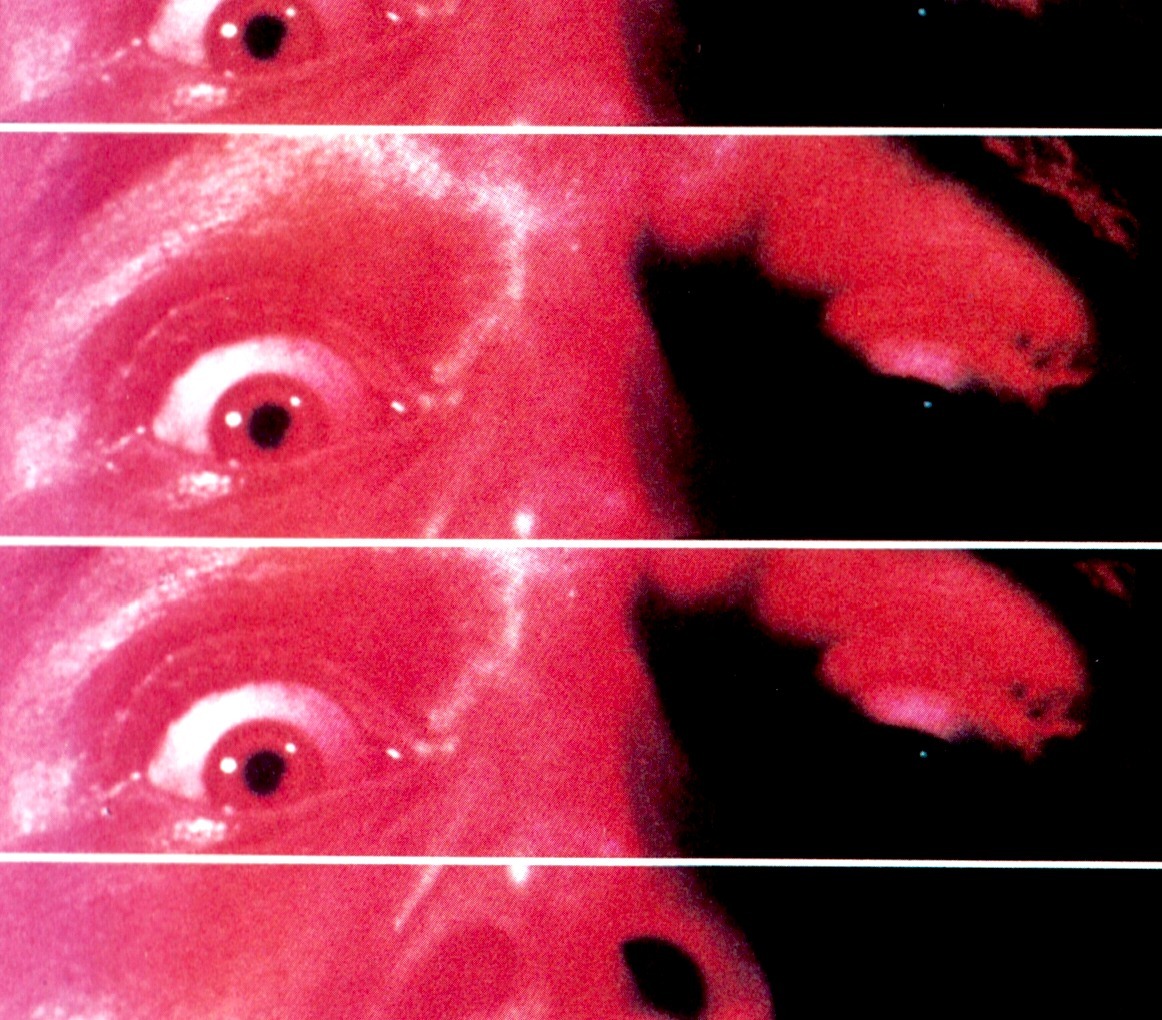



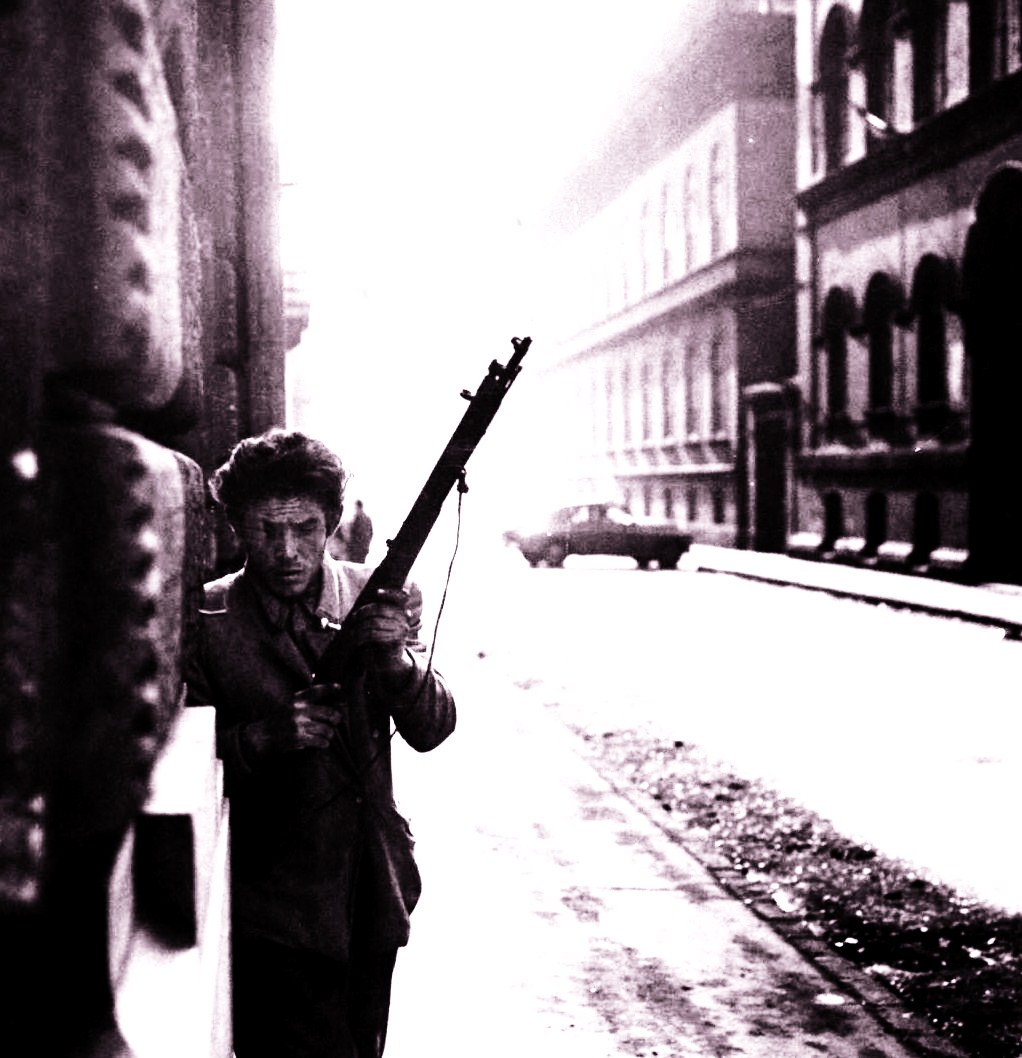
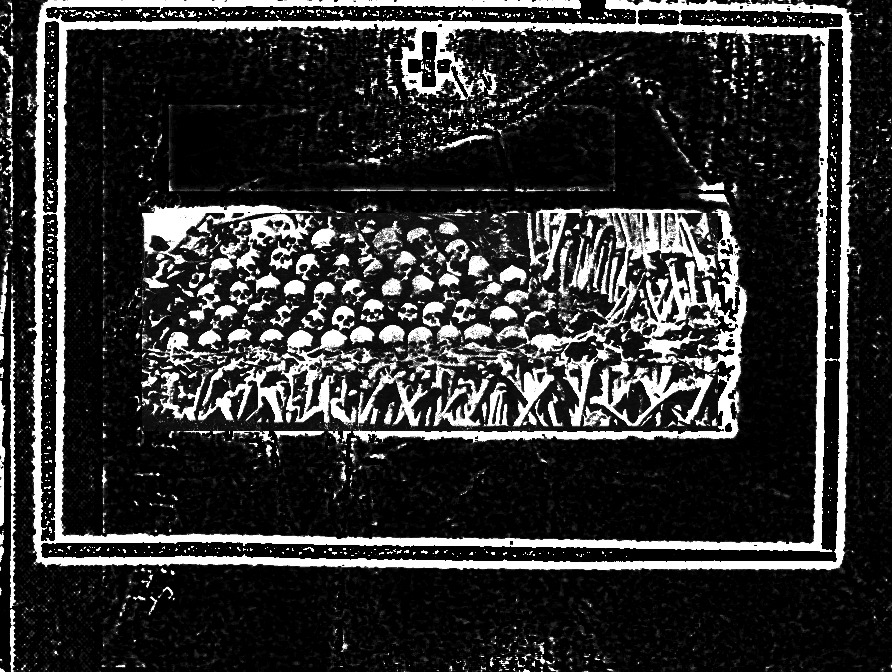



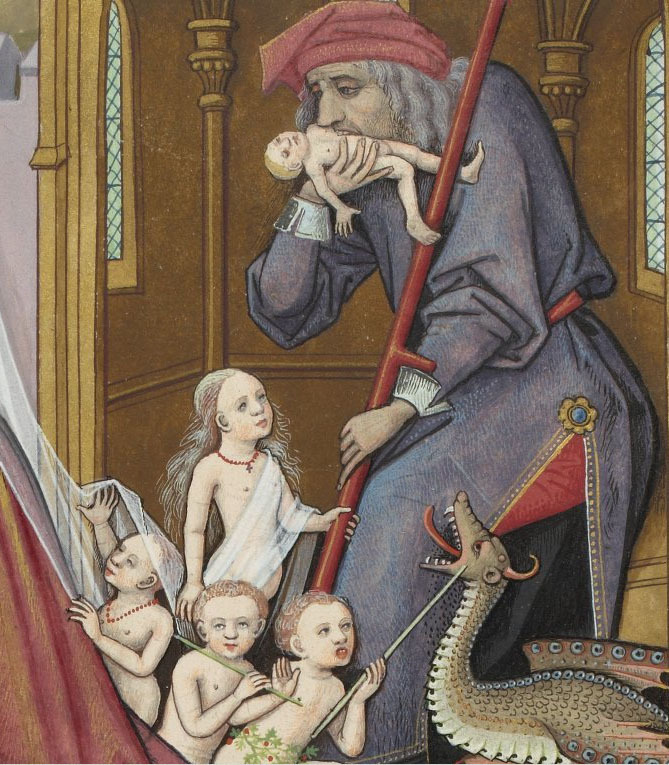
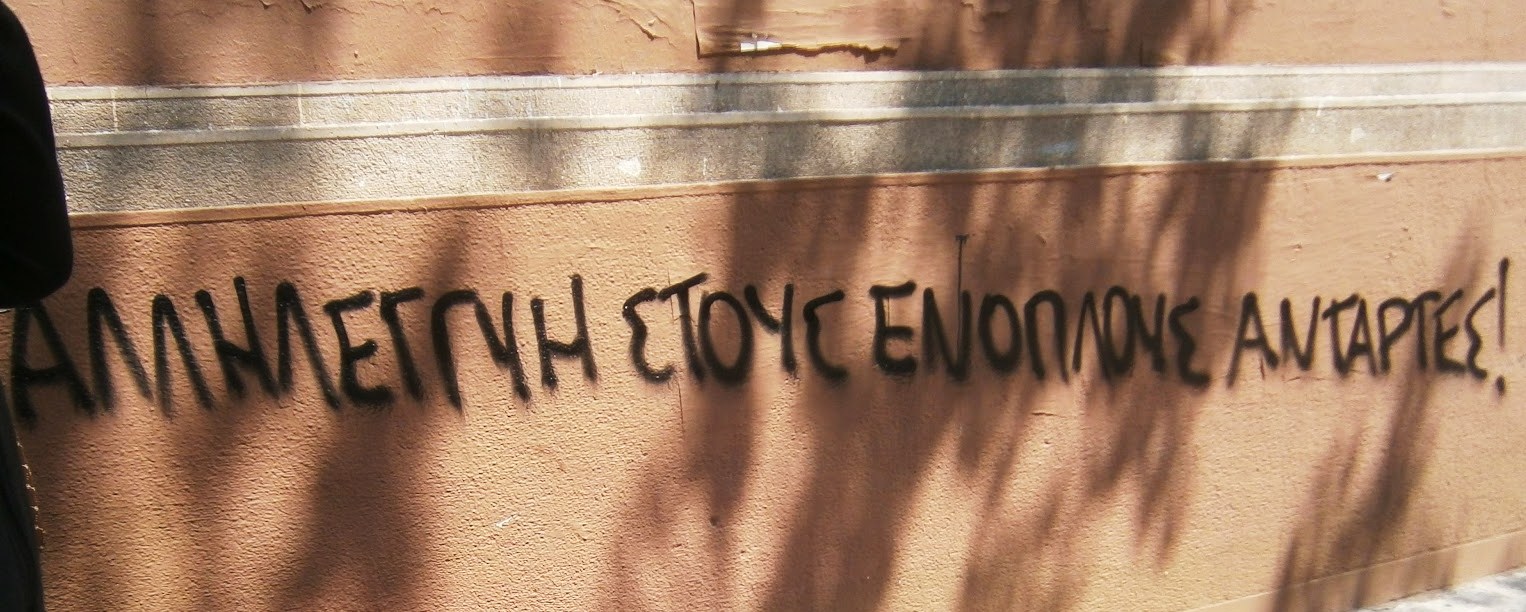

![Eurorepressione - Sulla conferenza a Den Haag sul tema "Anarchia" [corretto]](http://25.media.tumblr.com/tumblr_m0jvngOXtY1qa2163o1_1280.jpg)




![A tres años de la Partida de Mauricio Morales: De la Memoria a la Calle [Stgo.]](http://metiendoruido.com/wp-content/uploads/2012/05/mmacividad.jpg)
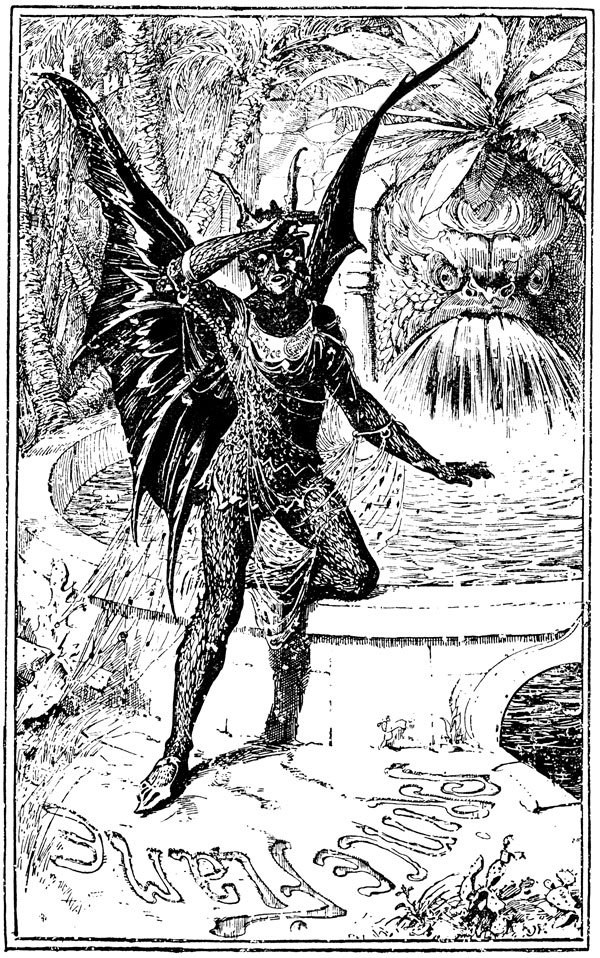




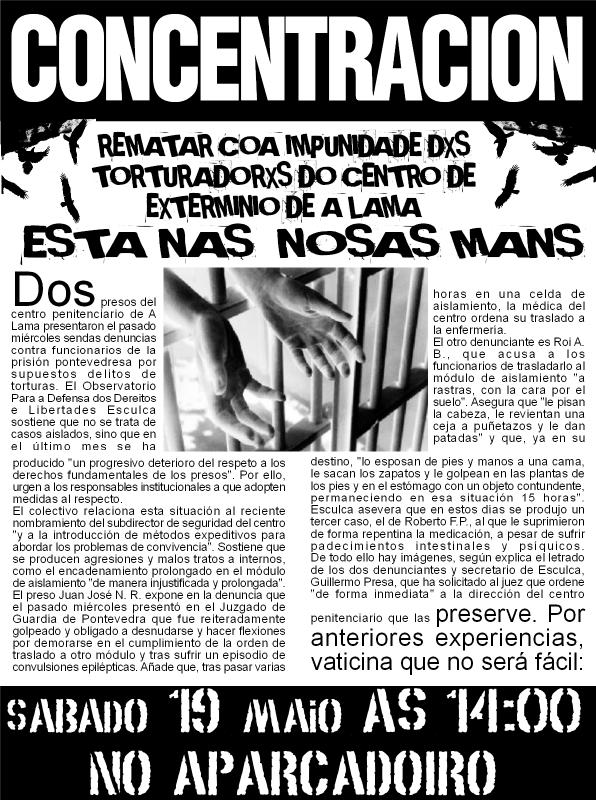


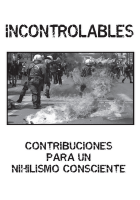
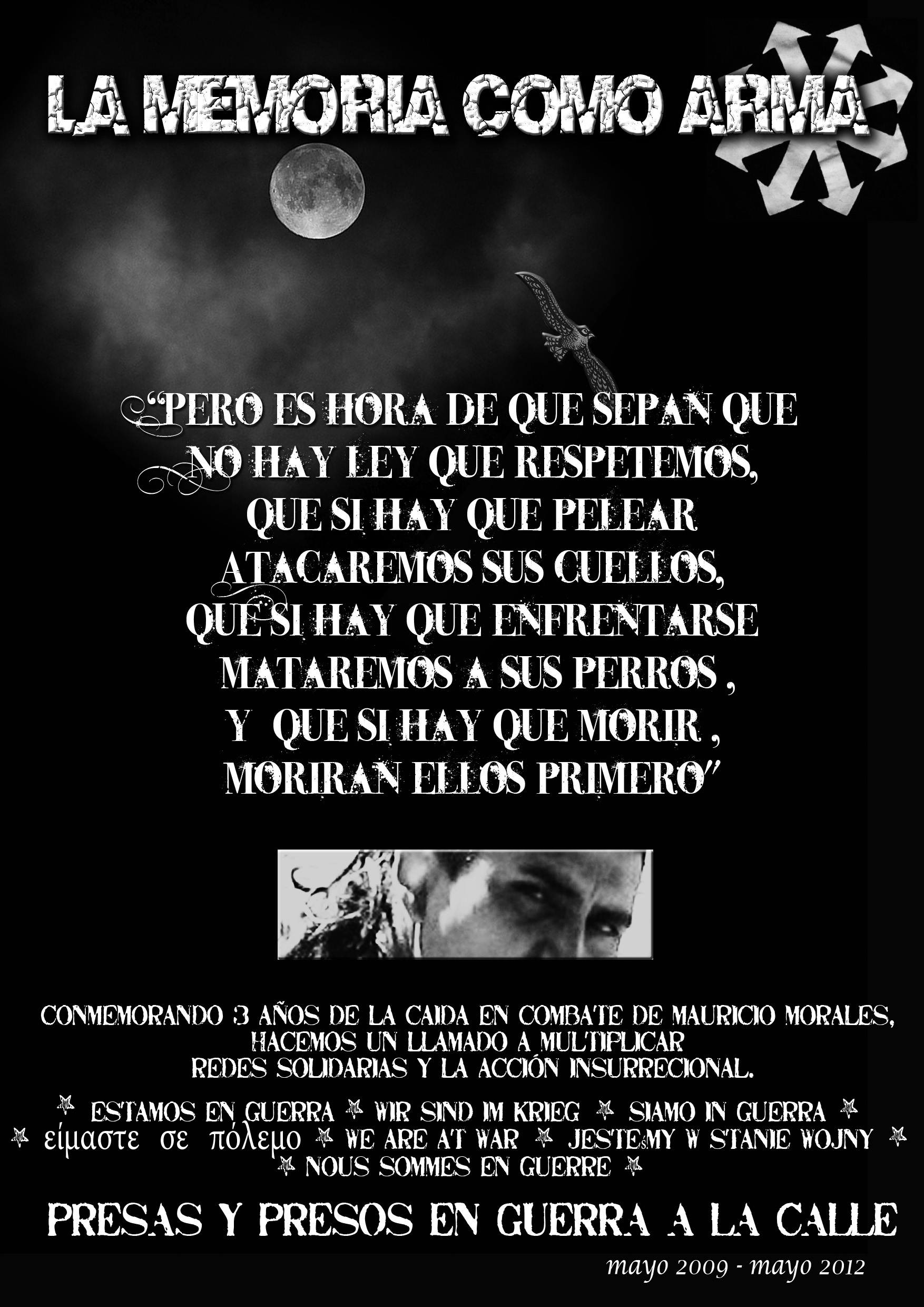









Nessun commento:
Posta un commento